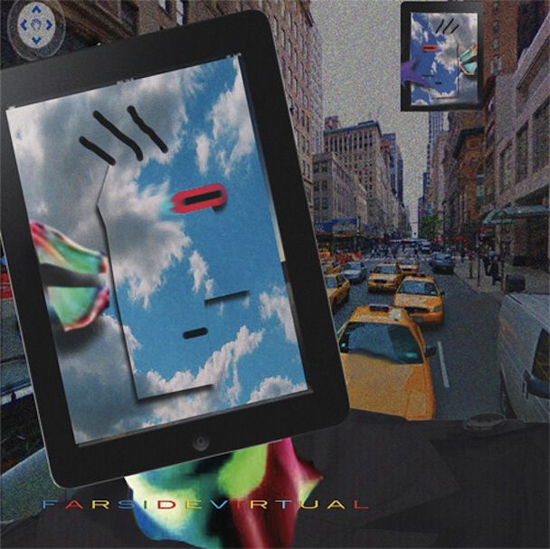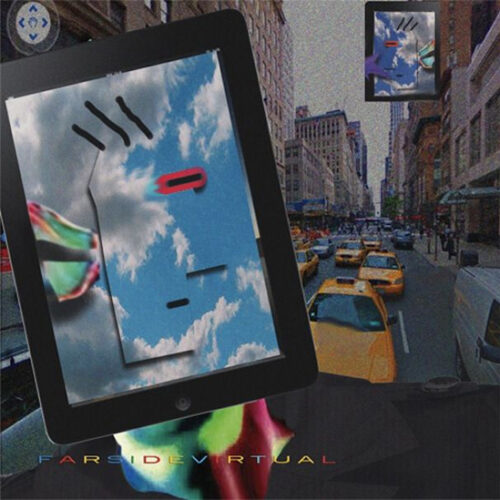Sifting through James Ferraro’s vast discography can be an exhausting task. Up until this year he’s been frighteningly prolific, amassing a labyrinthine back catalogue of limited CDRs, cassettes and vinyl LPs, under a whole range of pseudonyms. That we’ve heard nothing in 2011 from the former Skater until now (save a recent teaser EP, Condo Pets), then, comes as something of a break from typical form. In terms of sound, though, his latest full length offers a few clues as to the reason for its long gestation. Where almost everything he’s released up until now has been written and recorded largely with guitar, voice and beaten up boomboxes, and has made a distinct point of its ultra-muggy fidelity, Far Side Virtual arrives to the listener’s ear in almost painfully high definition. It’s all angles and glimmering surfaces, each element carefully isolated from everything else with cocaine-sharp lucidity. It would appear that in his time off from his busy release schedule, Ferraro has locked himself in his room, bought himself a laptop, doused himself in energy drinks and wholly rewired his approach to recording.
That said, despite its apparent surface differences, Far Side Virtual remains very much au fait with the rest of his output. Although in interviews Ferraro typically conducts himself with a straight face his material on the whole, which disguises ambivalence as unfettered celebration, paints him as something of a provocateur. He’s fond of distending snapshots of the modern world outward into vastly exaggerated, grotesque versions of reality, and in doing so laying bare the more disturbing consequences of late-period (and especially US model) capitalism. The sun-soaked guitar haze of 2009’s Edward Flex Presents: Do You Believe In Hawaii? was repeatedly interrupted by the barely human grunts of swollen, iron-pumping gym gargoyles, burnt lobster-pink and reeking of anabolics.
The thrashy, helium-voiced pop-punk of last year’s Night Dolls With Hairspray, meanwhile, stretched teen movie sexualisation to quite horrifying extremes: ‘Leather High School’s principal "wearing panties under his suit", the antihero of ‘Killer Nerd’ undergoing a Hulk-style transformation into school massacre monster. Even his softer, more accessible recordings – Heaven’s Gate‘s New Agey drone (named after a famous suicide cult); the bluesy, keening expanses of ‘Last American Hero’ – are accompanied by words and artwork that add subtle, biting commentary. The latter is presented as a tribute to endless suburban sprawl, featuring liner notes about an entire new civilisation founded by people who became lost forever in the identikit recesses of a Wal-Mart/CostCo-style mega-warehouse.
Far Side Virtual might have ditched the tape hiss and joss sticks, along with the dreamstate references to 80s pop culture that earned Ferraro column inches in Wire‘s first missive on the now well-worn ‘hypnagogic pop’ concept. But the intent remains intact, this time directed at the glossy hyperreality of the online world. Its sixteen tracks arrive as unbroken, bracingly synthetic rushes of arpeggiated notes, pointedly digital and peppered with Windows ident soundbites and Sim City/Second Life voice snippets. As with many of his older recordings, corporate branding and celeb culture get a thrashing, albeit in the form of glossy glamourisation – tracks entitled ‘Google Poeises’ and ‘Starbucks, Dr. Seussism & While Your Mac Is Sleeping’; your digi-waitress on ‘Palm Streets, Wi-Fi & Dream Sushi’ informing you that "Your dish is being prepared by master chef Gordon Ramsay".
As ever with Ferraro, everything is exaggerated to almost disturbing extents. It’s genuinely odd that Far Side Virtual has seen him embraced by the sort of publications that wouldn’t usually care to give him a mention, given that it’s one of his more challenging recordings. Its uniform surface polish and cutting treble are as alien and uninviting as a screen’s worth of computer coding, making it a tough record to listen to in one sitting. That said, there might be something trashy and vaguely disposable about the music that makes up Far Side Virtual – it’s not necessarily an album I feel inclined to revisit as often as some of his older material – but it nonetheless feels like an important record within Ferraro’s canon so far. Removing the heat-haze has ensured there’s nothing here for him to hide behind. His vision of an internet-reliant world – increasingly detached from social realities, but secure in our illusion of a connected utopia – proves unsettlingly close to the bone.
In fact, Far Side Virtual is most reminiscent of a twentieth century equivalent to Godfrey Reggio’s 1982 film Koyaaniqatsi. That film paired Philip Glass’ unrelenting, sensory overload of a score with images of humankind’s increasingly destructive attitude towards both itself and its environment: endless strip-lit conveyor belts attended by sickly staff; monstrous JCBs ripping great rents in virgin soil; plastic-enhanced Vegas girls. Far Side Virtual takes Glass’ score out of the orchestral realm, converting it to ringtone-simple waveforms, but retains the same unwavering intensity. The environment it soundtracks, though, has become even further removed from the natural world we were already tearing to shreds in the eighties. Not content with artificialising our landscapes and bodies, it says, we’re now going one step further and doing the same to our minds.
With that in mind, the other cultural artefact Far Side Virtual recalls is James Stinson’s 2001 electro masterpiece Lifestyles Of The Laptop Café, recorded under the name The Other People Place. An early warning signal of the loneliness of the online experience, recorded before broadband took total control, its eight tracks were chilly, detached and suffocatingly sad. Its cover depicted a computer monitor in deep green woodland, gazing into an empty, red room. The excellent Drexciya Research Lab blog suggested that this room was the title’s ‘other people place’, an artificial world populated by shadowy, spectral human avatars (the ‘other people’).
A full decade later – how time flies – we’ve traveled through that looking glass. Far Side Virtual‘s cover art again depicts a world whose focus is a single screen, but this time that screen is an iPad, sat on shoulders in place of a human head. We’re no longer outside looking in, says Far Side Virtual. This is the Other People Place, and we’re the Other People, seduced by instant, surface-level sexy pleasures. Plug in and turn on, baby, surrender to its augmented charms.



